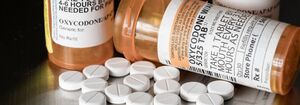United States opioid epidemic
 | |
| Interests | Big Pharma |
|---|---|
| Description | The extensive overuse of prescription opioid medications leading to illegal use in the United States from the 1990s. The purpose was to create a market for Afghan opium and to break potential political dissent. |
The opioid crisis (also known as the opioid epidemic) refers to the extensive overuse of opioid medications, both from medical prescriptions and from illegal sources. The crisis began in the United States in the late 1990s, when opioids were increasingly prescribed for pain management and resulted in a rise in overall opioid use throughout subsequent years.
From 1999 to 2017, more than 399,000 people died from drug overdoses that involved prescription and illicit opioids. Those addicted to opioids, both legal and illegal, are increasingly young, white, and female, with 1.2 million women addicted compared to 0.9 million men in 2015. The problem is worse in rural areas.
Official Opposition Narrative
The official opposition narrative is that this was caused by greedy Big Pharma companies lobbying to change the guidelines for prescription drugs. Particularly the Sackler family and its Purdue Pharma was blamed.
Purpose
The peak of the 'epidemic' happened at the same time as the US control over the Afghanistan opium production. The increased opium harvests required a bigger market, which had to be expanded by creating new users.
And just like in the CIA-Contras-cocaine operation in the 1980s, which destroyed black urban communities and black political organized dissent, the purpose this time was to destroy potentially unruly groups by breaking the cohesion of societies already in crisis, this time in the white working class.